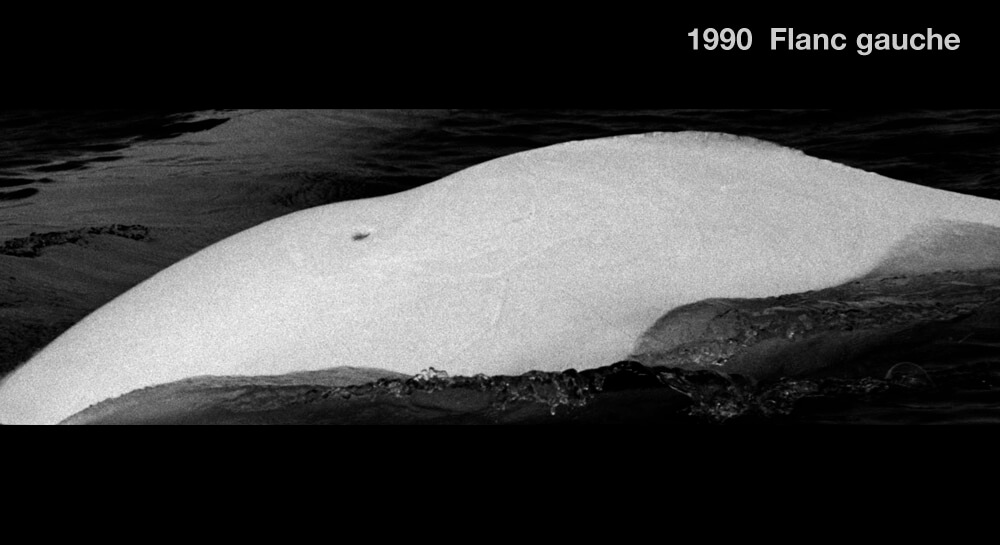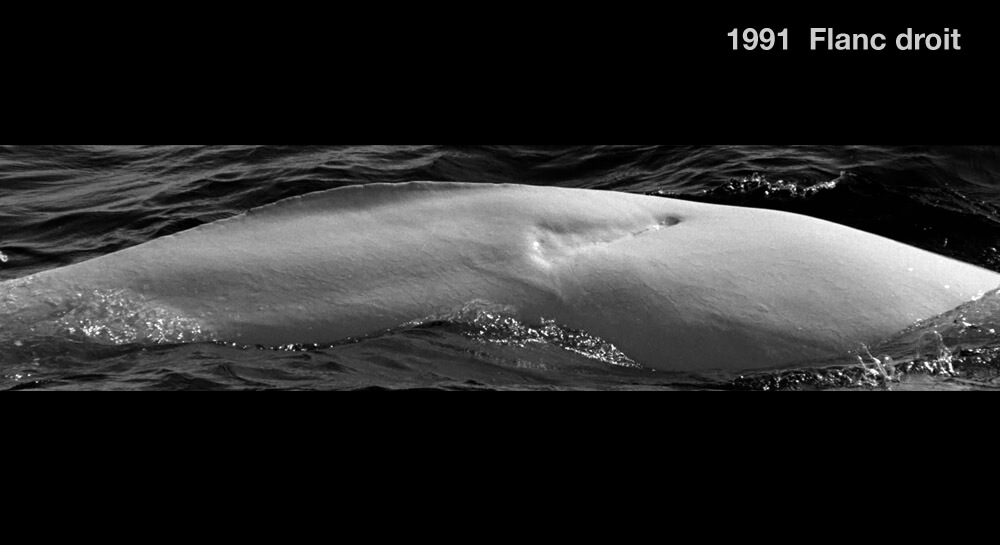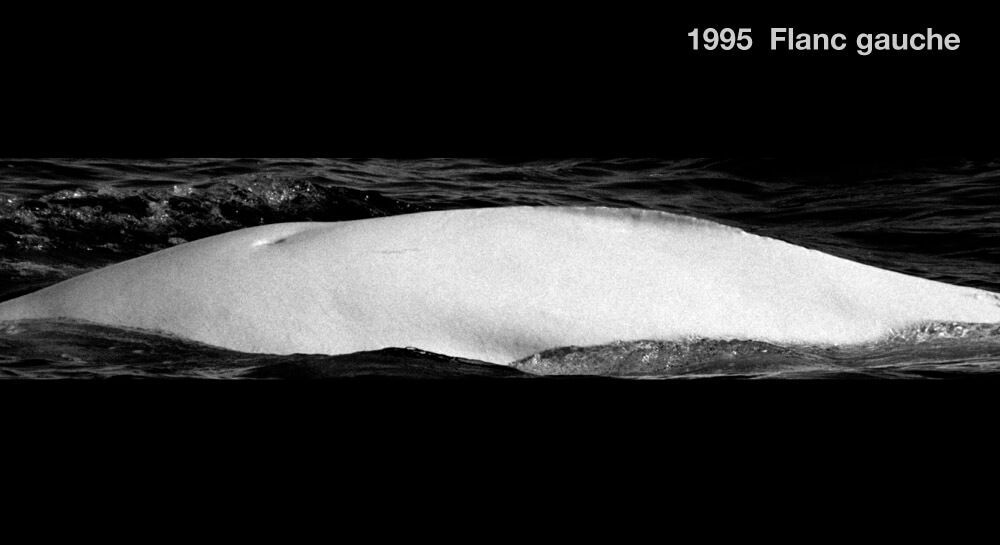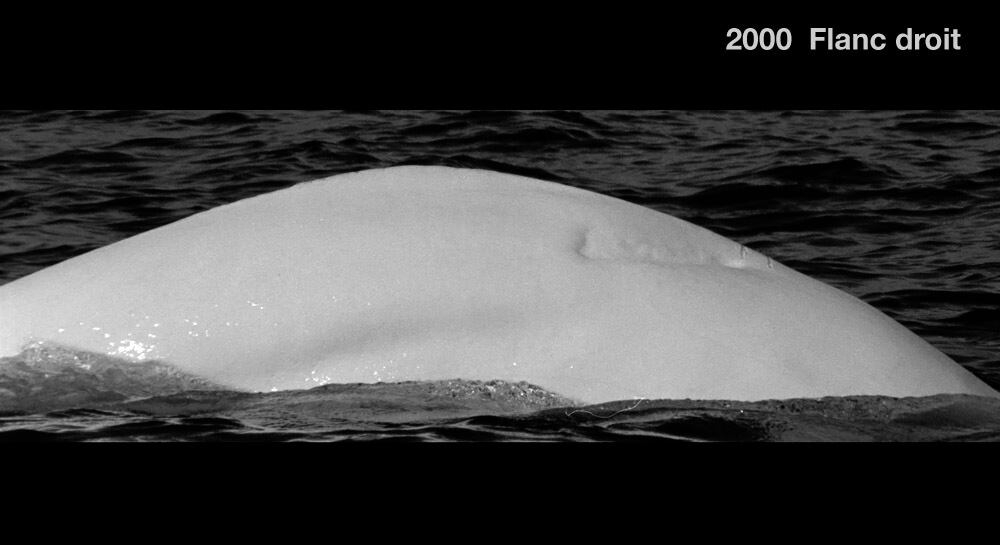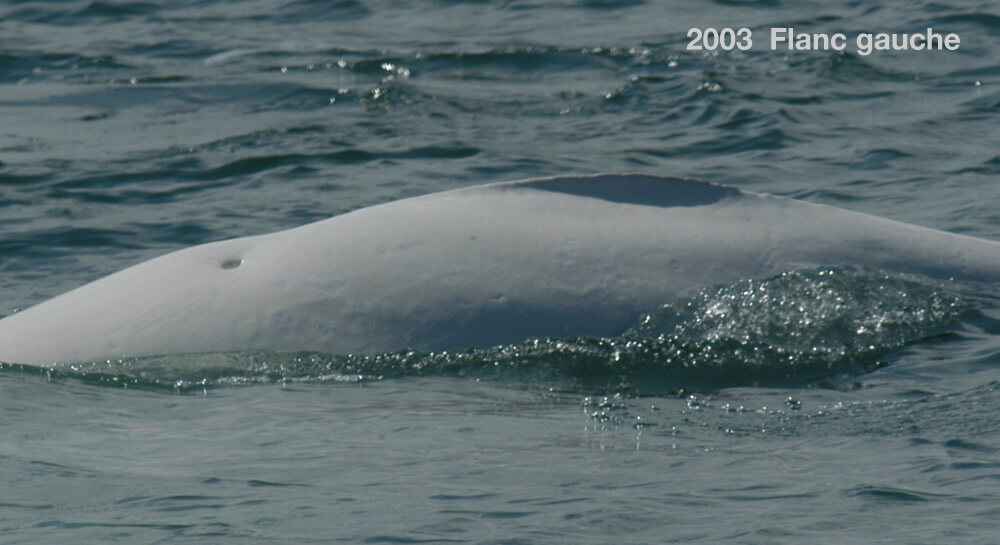Adhothuys (1966-2005)
Beluga

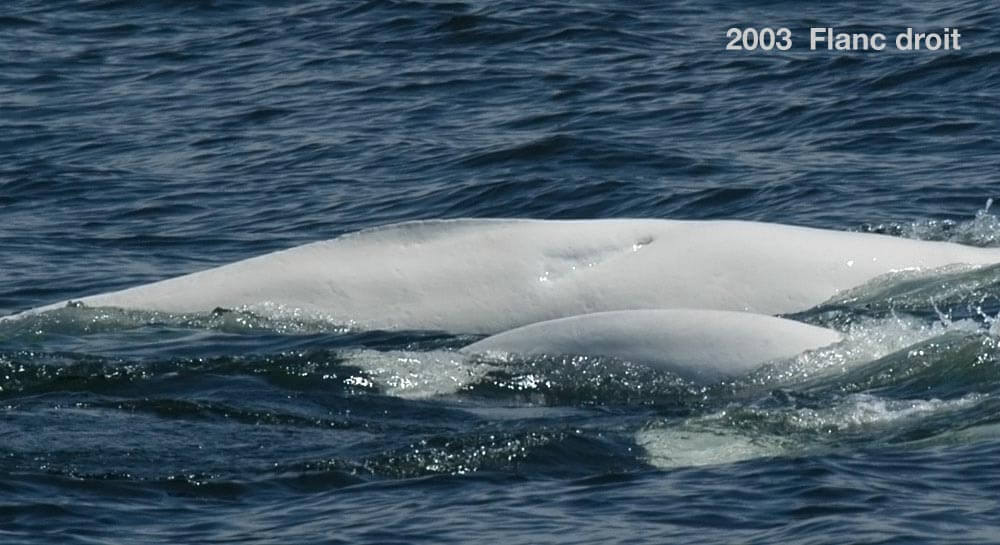
Adopted by the employees of Fisheries and Oceans Canada, the Landscape Architecture Canada Foundation and the Canadian Coast Guard
-
ID number
DL0073
-
Sex
Male
-
Year of birth
1966 (death in 2005)
-
Known Since
1986
Distinctive traits
Adhothyus can be recognized in any way. By his large scar on the right flank, by the small round scar in front of the left flank crest or by his irregular dorsal crest.
Life history
We first photographed Adhothuys on September 4, 1986. He was already an immaculate white adult.
He is a member of the network of males in the downstream sector, between Tadoussac, Les Escoumins on the north shore and Trois-Pistoles on the south shore.
After some twenty observations, we found that, like many of the males in this network, Adhothyus seems to have a preference for being found in large herds composed almost exclusively of adults.
Regularly seen with...
Observations history in the Estuary
Years in which the animal was not observed Years in which the animal was observed
Latest news
On May 13, a dead beluga whale was found washed up on a beach in Saint-Ulric. Photographs of the animal’s scars revealed it to be Adhothuys or DL0073, one of some 350 belugas known to GREMM/INESL researchers. Post-mortem examination confirmed that Adhothuys was male. He is 39 years old and measures 4.2 meters.
DL0073 was first identified on September 4, 1986. Adhothuys was already an adult by then, and his large scar in front of his dorsal crest on his right flank made him easily recognizable. However, researchers had to wait four years before seeing him again. He was then photographed more regularly from 1991 to 1998, in 2000 and in 2003.
Adhothuys was part of a network of males that frequent the lower estuary, the belugas’ summer range. He was regularly observed in the Laurentian Channel area, off Les Bergeronnes and Cap de Bon-Désir. His sex was confirmed by analysis of DNA extracted from a biopsy (a piece of skin and fat) taken from his back in 1993. Like other adult males in the population, Adhothuys lived during the summer in bands composed mainly of males. Occasionally, these bands would join with herds of juveniles, or with females accompanied by juveniles, to form large mixed herds. Adhothuys has frequently been observed in these aggregations, which can number up to 150 belugas.
The beluga photo-identification program has revealed the existence of stable, long-term associations between adult males. The function of these alliances is still poorly understood. It could play a role in competition for reproduction. Adhothuys’ most loyal companion was DL0111, also known as Bon Désir. The latter was also found dead in July 2000 off Les Escoumins.
The Adhothuys carcass stranded in Saint-Ulric was in good condition. It was therefore transported to the laboratory of the Université de Montréal’s Faculty of Veterinary Medicine in Saint-Hyacinthe, where Dr Stéphane Lair’s team performed a necropsy. Preliminary analysis suggests that Adhothuys died as a result of chronic lung disease, but further analysis is required before this can be confirmed.
Monitoring of St. Lawrence beluga whale mortalities has been ongoing since 1982. This unique study, carried out by the St. Lawrence National Institute of Ecotoxicology (INESL), the Faculty of Veterinary Medicine of the Université de Montréal and the Maurice Lamontagne Institute (IML-MPO), in collaboration with the Saguenay-St. Lawrence Marine Park, has already identified health problems in this population, which is exposed to several sources of pollution. With the help of genetics and photo-identification, we are beginning to make the link between individuals “known” during their lifetime and the carcasses found on the shores. This information opens up a new avenue for understanding the apparent lack of recovery of this threatened population.
In 1990, DL0073 was adopted by a group of IML-MPO employees in collaboration with Canadian Coast Guard employees and the Landscape Architecture Canada Foundation. They named it Adhothuys, the name given by the Amerindians in Jacques Cartier’s time to these white inhabitants of the waters of the St. Lawrence. This gesture, and that of the 115 other sponsors of the St. Lawrence belugas, helped write this story.
Sponsors
The employees of Fisheries and Oceans Canada adopted Adhothuys (1990).
The Landscape Architecture Canada Foundation adopted Adhothuys (1990).
The Canadian Coast Guard adopted Adhothuys (1990).

